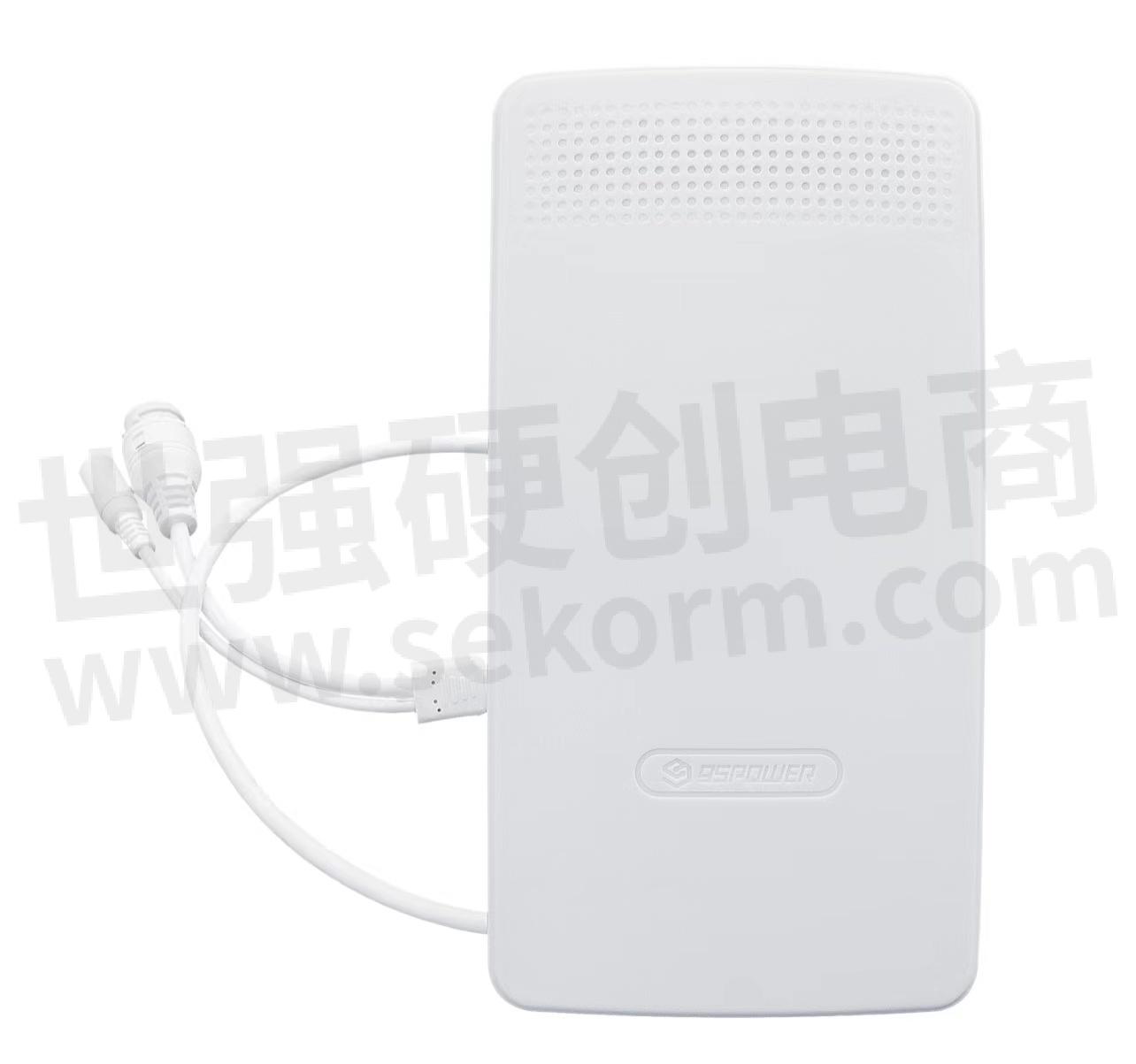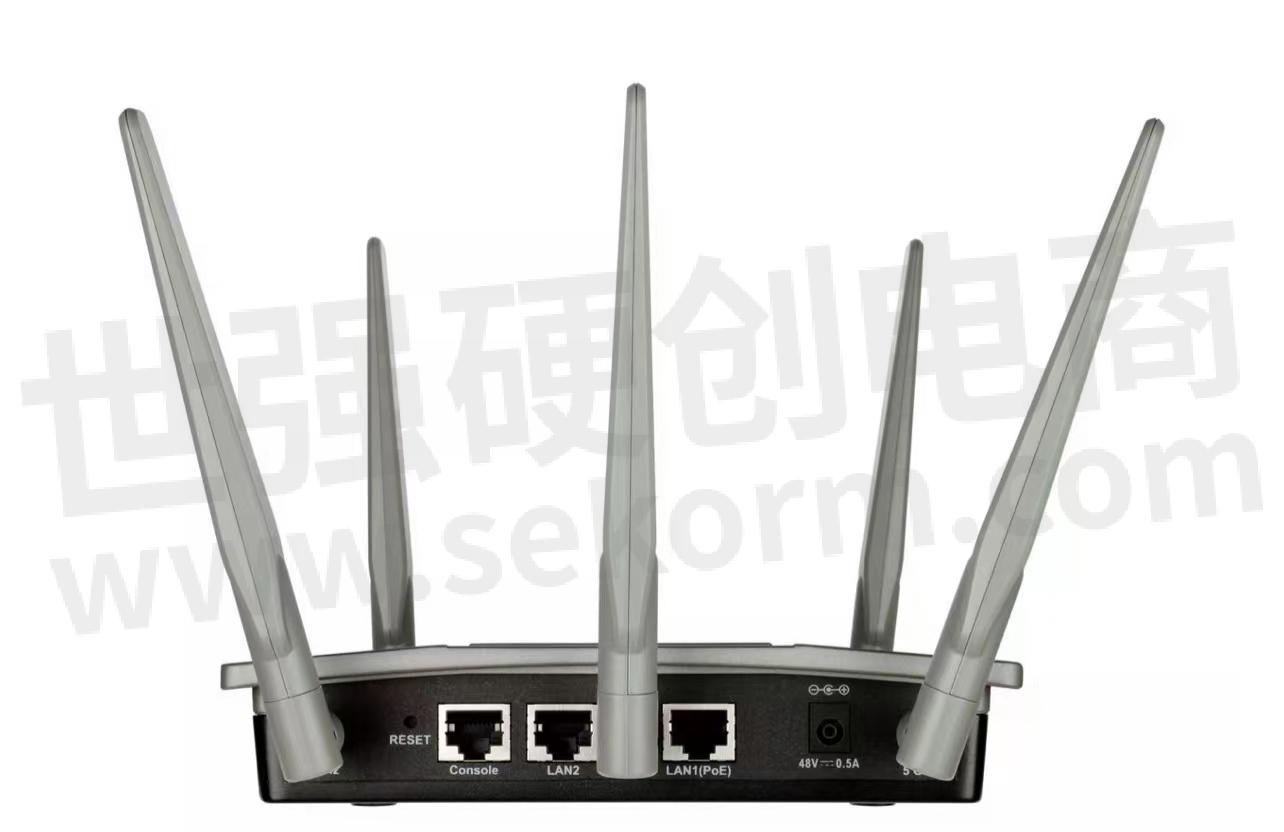How To Connect To AP WiFi Module?




Whenever you buy new equipment or device for your office or home, chances are that you might experience inconvenience while setting it up. For some people, the installation of new devices or equipment is a delight. But for someone, it can also be a chore and they would like to complete the installation ASAP. There are even some people who don’t even try installation as they believe a little mistake may create a big hassle. Setting up the AP WiFi Module is one such task and most people don’t know how to do it.

SKYLAB is here to help you set up your AP module without any hassle. In this guide, SKYLAB will try to make this process smooth and simple with our expert advice and instructions. You will learn how you can set up AP and things that are essential for a successful setup.
AP WiFi Module Setup Necessities
The guidelines here are for the typical or basic AP WiFi module. However, the guidelines may differ according to different systems or devices. There are numerous things that you will require to set up your access point (AP). Here are those necessities that you must know before we move on to the setup section.
The Access Point (AP): the key player in the list is the access point. AP provides an extra location for the end device(s) to establish a connection with the LAN. Thus, it expands the coverage area of the KAN.
A Router or Switch: You also require a router or switch to set up your AP module. These are the devices that you need for the management and distribution of the information transferred from, to, and among end devices and APs within the LAN (local-area-network).
Ethernet Cables: these cables are the wires that are essential for the high-speed transfer of data among other devices and access points. Therefore, you also need Ethernet cables to complete the AP WiFi module setup.
A DC/AC Adapter (if received): A few access points (Aps) may also require a DC/AC power adapter for functioning. However, many modern-day APs support PoE (Power-Over-Ethernet) that eradicates the requirement of external AC/DC adapters.
A Computer: Of course, you also need a computer for advanced or basic network configuration or access points. Therefore, make sure that you also have a computer that you can use for the AP module setup.
Apart from these things, you may also require some other items according to the situation and hardware. Such items may be a modem, wall mounts, extension cords, AP driver installation discs, and other things. If any of such elements or items is missing, you may find it impossible to complete the AP module setup.
Setting Up an AP Module
Once you have all the necessary items ready that we discussed above, it is time to begin the AP module setup. Here are the different steps involved in setting up your AP WiFi module:
Step 1: Deploy the Switch/Router
Perform this step if you currently have no switch or router. First of all, you have to identify the most appropriate device for your device. If you have a WiFi router, you should position it at the most appropriate location, according to the access point’s potential location. Choosing the right location is essential to ensure the most effective spreading of the coverage. It will also guarantee minimum interference levels. If it’s the wired router or a switch, you should deploy it somewhere where the device must not obstruct surrounding solutions and any other activities.
After the most suitable placement of the switch or router, connect the device to the power outlet. Now, switch the router or switch on. If you are using a PoE-compatible device, it will not need the power outlet as it can run on the Ethernet cable only. Moreover, numerous devices automatically turn on right after you connect them to the power source.
Step 2: Deploy Your AP (Access Point)
In the second step, you first have to locate a reliable place for your device. If your LAN has other WiFi devices, like a router, you should position your AP somewhere where its WiFi signal will have no or minimal interference with WiFi devices inside the local area network. Also, make sure that the device must offer excellent coverage according to your premises. If you are installing the AP WiFi module for introducing a WiFi connection to the wired local area network, position it somewhere where the WiFi signal should cover the best possible range with minimum hurdles and interference.
If your device runs with the help of a DC/AC adapter, you should connect it with the AP and get it into the electrical socket. In the case of a Power-Over-Ethernet connection, you should also consider the third step we discuss below.
Step 3: Connecting the Cables
In the third step, you need to connect your cables. There are different cables that you will have to connect. Use the Ethernet cable for connecting the AP to your router. You need to insert the cable into the local area network port on your router and also into your primary Ethernet port available on the AP. It will introduce the AP to the LAN created by the router.
Link your computer with the router using the Ethernet cable. Insert the cable into the port of the LAN on your router as well as into your computer’s Ethernet port. It will put your computer on the network, allowing LAN management and direct AP. If you want to ensure internet access over the LAN, you can consider the Ethernet cable for establishing a connection between the modem and the router. You should plugin the cable into the primary port of the Ethernet on your router as well as into the modem’s Ethernet port.
Step 4: Configuration
It is the final step. Most modern-day devices come without the hassle of performing manual local area network setup. Therefore, you will most probably not have to perform the manual setup. After connecting everything properly and the devices are acknowledging the presence of each other on the system, you are all set to use your AP WiFi module. If you need help on the basic AP or network, the device package also includes a user manual. This user manual contains the configuration instructions. You can read this user manual to easily perform the necessary configuration.
You also have the option of changing the advanced and optional settings of the router. To do so, you will have to enter the router settings page on a web browser with the help of the router’s IP address. The IP address is usually 192.168.1.1 or 192.168.0.1. You will find your router’s IP address inside the user manual.
Congratulations! Your access point module setup is complete now. You can now start enjoying enhanced wireless signals and expanded coverage with your new access point. If you are still having trouble connecting to the network, you should talk to your ISP. Or, you can also hire a professional who can set up things accurately for you.

Useful Tips for Installing New WiFi APs
After setting up your AP WiFi module, you would be expecting the most reliable and smooth connectivity. However, there can still be some issues with the access point after the successful deployment. You can avoid such problems through some basic practices. Here are some helpful tips that can help you keep enjoying the most reliable AP services without any obstacles.
1. Do Not Place Your AP around Structural Metal
It is the same point that we discussed at the beginning of this article. You will have to ensure that the location of your access point is just perfect. You must not keep your access point around the structural metal. If it is, there will be radio interference. In this situation, your wireless network will not work effectively. If there is a metal object around your access point, you should move it away to keep enjoying perfect and uninterrupted coverage.
2. Use PoE When Required
The most organization keeps their wireless APs near or on the ceiling to help WiFi clients get the most desirable range. However, it may result in difficulties in getting power to your AP. Instead of using extension cords, you should prefer PoE. It provides the AP with power over idle cables inside the Ethernet cable. Distinct modules of PoE at both cable ends make sure that the networking hardware does not expose to the cable’s electricity.
3. Immediately Reset the Password of AP
Immediately after you set up your AP WiFi module, you should reset its internal password. If you don’t do this, anyone can access the configuration of your access point. It is easy to find the default access point password on the internet. Therefore, you must change the password after setting up the access point.
4. Do Not Overlap DHCP Scopes
Sometimes, people purchase additional wireless AP in an attempt to ensure enhanced wireless coverage. If an inexperienced person tries to set up this AP like the previous AP, it might cause trouble. Often, we cannot configure two access points with the same DHCP scopes. However, some access points may also fix the conflicts of IP addresses on their own before they assign IP leases. If they can’t the DHCP scopes overlapping will cause issues for the end-user.
5. Wireless Connections are Insecure
Do not believe that your wireless connection is secure. The biggest problem is that people don’t need to access your facility in person for connecting to the wireless network. It means that you must consider wireless encryption to secure your wireless network. To make your network more secure, you should treat the wireless network just like the internet connection. Deploy mechanisms such as VPNs before you allow people to access your wired networks.
6. Use SSIDs
Most IT professionals suggest you must not broadcast the SSID of your wireless AP. Even if you don’t broadcast it, a hacker can still easily discover the SSID. We recommend you use SSID names. It will help a lot.
7. Use all Built-In Security Features
Even if you buy a cheap price wireless AP, it should have several security features that you must utilize. For instance, most APs allow us to restrict access to the network through MAC address. A few wireless APs also come with alerting mechanisms. Such mechanisms send an email if someone is trying to join your network repeatedly with an incorrect password. Therefore, you must not forget to use all security features that come with your AP WiFi module.
8. Connect APs to the UPS
A great piece of advice for all WiFi network administrators is that they should connect every single WiFi access point to the UPS (backup batteries). A wireless user will have no network access if there is a power failure. Having no network access is not the only concern. Imaging there is no power for a few seconds only. That would be enough to cause a long wireless session disconnection. Because several persons are connected to the same wireless network, they all would face the problem because of this power blip.
Most devices will reestablish the lost connection automatically. However, it will create a lot of mess if the network requires every single user to authenticate before connecting to the backend network. They will be locked out completely until the re-authentication process completes. It may result in receiving many calls from chaotic users.
9. Make Adjustments to Signal Strength
A few wireless APs also allow us to manually adjust the strength of signals via a Web interface. It is always tempting to utilize the max signal strength. But, does it make sense to push WiFi signals far across, such as to your parking lot? Before you adjust your signal strength, you must consider your WiFi network boundaries. Then, you can adjust the strength of signals accordingly.
10. Never forget to Fill Your Warranty Card
It is often an overlooked thing, but you must fill out your AP WiFi module warranty card that you have received with the product. Bad luck can happen anytime, so you must be ready for it. Usually, access points work flawlessly for a year. By filling out your warranty card, you will have the peace of mind that you will get free service if something bad happens during the warranty period.

- |
- +1 赞 0
- 收藏
- 评论 0
本文由天星转载自SKYLAB,原文标题为:Connecting My Ap Wi-Fi Module,本站所有转载文章系出于传递更多信息之目的,且明确注明来源,不希望被转载的媒体或个人可与我们联系,我们将立即进行删除处理。
相关推荐
How to Enable the USB WIFI Camera Ap Module on A PC?
In artical, Skylab introduces the key parameter for a router and lists the normal external ap modules. Then shows how to enable the USB WIFI camera ap module on a PC.
How To Choose The Smart Home IoT WiFi Module?
The wireless connection technology is the most critical in IoT application, SKYLAB is a wireless module R&D manufacturer. SKYLAB can provide WiFi module, Bluetooth module, GPS module IoT application solutions. In this article I want to tell you how to choose WiFi module for smart home IoT.
How AP Station 802.11bgn Wifi Module Works and its Frequency, Making a Wi-Fi Adapter for a TV Yourself
2.4 GHz frequency uses since the beginning of the creation of prototypes of the Internet - ALOHAnet and ARPANET, which resulted in Ethernet, and later IEEE 802.11, that is, Wi-Fi.
WiFi module SKW77 for UVA to Realize WiFi Image Transmission, Transmission Rate up to 300Mbps
In this article, SKYLAB introduces how the drone realizes WiFi image transmission and the long-distance WiFi image transmission application of the high-power WiFi module SKW77.
SKYLAB‘s WIFI6 module WG236 supports AP and STA dual role connections
This artical tells what is WIFI6 module, introduces its core technology and advantages. Skylab also recommends WIFI module WG236 and shows its product features.
Dual-band AP Routing WIFI5 Module Recommended SKW78, SKW93A and SKW100
Let Skylab introduce to you the dual-band Wi-Fi module router solution. In addition, Skylab will introduce several dual-band WiFi5 modules based on MTK and Qualcomm solutions.
300Mbps Router Wifi Module with USB WLAN Interface Applied into IP UVC Camera/Ble Wifi Gateway
SKYLAB‘s SKW92A router wifi module includes an 802.11n MAC and baseband, a 2.4GHz radio and FEM, a 580MHz MIPS CPU, a 5-port 10/100 fast Ethernet switch. Solution for low power, low-cost, and highly integrated AP router and consumer electronic devices, the module requires only an external 3.3V power supply. It supports 802.11n operating up to 144Mbps for 20MHz and 300Mbps for 40MHz channel respectively, and IEEE 802.11b/g data rates.
LCS2028 规格书/datasheet WIFI 802.11n + Bluetooth DM 5.1
LCS2028是一款集成了WiFi 802.11n和蓝牙5.1功能的模块,支持AP和STA双角色连接。该模块具备丰富的外设接口,包括PWM、I2C、UART、SPI等,适用于物联网、网络消费设备等领域。
天工测控 - WIFI模块,蓝牙双模5.1和WI-FI 802.11N模块,BLUETOOTH DUAL-MODE 5.1 AND WI-FI 802.11N MODULE,LCS2028_P,LCS2028_E,LCS2028,MESH NETWORK,BABY MONITORS,传感器网络,智能照明,智能家居网关,HOME AUTOMATION,婴儿监控器,家庭自动化,物联网,计量,METERING,工业控制,楼宇自动化,SMART LIGHTING,婴儿监视器,BUILDING AUTOMATION,SMART HOME GATEWAY,智能插头和灯,网状网络,INDUSTRY CONTROL,IOT,网络消费设备,INTERNET OF THINGS,SENSOR NETWORK,NETWORK CONSUMER DEVICE,SMART PLUGS AND LIGHTS
What Are IoT WIFI Modules from SKYLAB that Support the SPI Interface?
For the high-speed communication needs in various applications, SKYLAB has launched a variety of WiFi modules that support the SPI interface. SKYLAB introduces several IoT WIFI Modules that support the SPI interface through this article.
LCS2028 WIFI 802.11n + Bluetooth DM 5.1 规格书(LCS2028 WIFI 802.11n + Bluetooth DM 5.1 datasheet)
LCS2028是一款集成了WiFi 802.11n和蓝牙5.1功能的模块,支持AP和STA双角色连接。该模块具备丰富的外设接口,如PWM、I2C、UART等,适用于物联网、智能家居、网络消费设备等领域。
天工测控 - 蓝牙双模5.1和WI-FI 802.11N模块,BLUETOOTH DUAL-MODE 5.1 AND WI-FI 802.11N MODULE,WG238_P4,LCS2028,WG238_E4,MESH NETWORK,BABY MONITORS,传感器网络,智能照明,智能家居网关,HOME AUTOMATION,LIGHTS,婴儿监控器,家庭自动化,物联网,计量,METERING,智能插头,工业控制,楼宇自动化,SMART PLUGS,SMART LIGHTING,婴儿监视器,BUILDING AUTOMATION,SMART HOME GATEWAY,网状网络,INDUSTRY CONTROL,IOT,网络消费设备,灯,INTERNET OF THINGS,SENSOR NETWORK,灯光,NETWORK CONSUMER DEVICE
SKW73 802.11b/g/n WIFI模块产品介绍
本资料为深圳市天工测控技术有限公司生产的SKW73型号2x2 MIMO WLAN模块的技术规格说明书。该模块符合IEEE 802.11b/g/n标准,支持高达300Mbps的数据传输速率,适用于低功耗、低成本和高集成度的接入点(AP)和消费电子产品。它集成了MT7620N芯片组,具有内部功率放大器(PA)和低噪声放大器(LNA),并支持AP模式、客户端模式和路由器模式。
天工测控 - 2X2 MIMO WLAN MODULE,2X2 MIMO无线局域网模块,SKW73_E,SKW73_P,MT7620N,SKW73,机顶盒,UART WIFI,HOME GATEWAYS,DVR,AP WIFI,GAMING CONSOLES,游戏控制台,中继器WIFI,IP TV,AP WIFI,SET TOP BOX,UART无线网络,IP DVD(互联网视频点播播放器),REPEATER WIFI,IP电视,IP DVD(INTERNET VOD PLAYER),家庭网关,数字录像机
SKW77大功率WLAN模块产品介绍
本资料为SKW77高功率Wi-Fi模块的数据手册。该模块符合IEEE 802.11b/g/n标准,支持高达+27dBm的输出功率,适用于高性能WLAN应用。它基于MT7620A芯片,集成2x2 MAC/BB/radio,提供高达300Mbps的PHY数据速率。模块支持桥接模式、AP客户端模式和路由器模式。
天工测控 - 大功率WLAN模块,HIGHLY POWER WIFI MODULE,HIGH-POWER WLAN MODULE,高功率WIFI模块,SKW77,SKW77_E16,SKW77_E8,无线接入点,工业控制,无人机,楼宇自动化,DRONE,BUILDING AUTOMATION,INDUSTRY CONTROL,WIFI AP,3G WI-FI路由器,WIFI中继器,无线工业数据传输,WIRELESS INDUSTRIAL DATA TRANSMISSION,WIFI REPEATER,4G WI-FI路由器,USB WIFI CAMERA PND (PORTABLE NAVIGATION DEVICE),4G WI-FI ROUTER,3G WI-FI ROUTER
WG238 WiFi 802.11n+蓝牙DM 5.1
WG238是一款集成了WiFi 802.11n和蓝牙5.1功能的模块,支持AP和STA双角色连接,适用于物联网、网络消费设备等领域。该模块具有丰富的外设接口,包括PWM、I2C、UART、SPI等,并支持低功耗睡眠模式和深度睡眠模式。
天工测控 - 小巧的WIFI模块,WIFI模块,COMPACT WIFI MODULE,蓝牙双模5.1和WI-FI 802.11N模块,LOW COST SERIAL WIFI MODULE,BLUETOOTH DUAL-MODE 5.1 AND WI-FI 802.11N MODULE,模块,低成本串口WIFI模块,WG238_P4,WG238_E4,WG238,MESH NETWORK,BABY MONITORS,传感器网络,智能照明,智能家居网关,HOME AUTOMATION,婴儿监控器,家庭自动化,物联网,智能灯,METERING,计量,智能插头,工业控制,SMART PLUGS,楼宇自动化,SMART LIGHTING,SMART LIGHTS,婴儿监视器,BUILDING AUTOMATION,SMART HOME GATEWAY,INDUSTRY CONTROL,网状网络,IOT,网络消费设备,INTERNET OF THINGS,SENSOR NETWORK,NETWORK CONSUMER DEVICE
WG236 WiFi 802.11ax+蓝牙BLE 5.1
WG236是一款集成Wi-Fi 802.11ax和蓝牙BLE 5.1的低功耗模块,支持AP和STA双角色连接。该模块具备高速MCU、丰富的外设接口,适用于物联网、智能家居等领域。
天工测控 - 小巧的WIFI模块,COMPACT WIFI MODULE,LOW COST SERIAL WIFI MODULE,MODULE,模组,低成本串口WIFI模块,WG236E,WG236,WG236P,MESH NETWORK,BABY MONITORS,传感器网络,智能照明,智能家居网关,HOME AUTOMATION,婴儿监控器,家庭自动化,物联网,METERING,计量,工业控制,楼宇自动化,SMART LIGHTING,BUILDING AUTOMATION,SMART HOME GATEWAY,INDUSTRY CONTROL,网状网络,智能插头和灯,IOT,网络消费设备,INTERNET OF THINGS,SENSOR NETWORK,NETWORK CONSUMER DEVICE,SMART PLUGS AND LIGHTS
How Does Ap Wifi Module Work Faster with IoT?
In recent years, the concept of ap wifi module has gradually popularized and many manufacturers are adopting it because of the convenience it brings. Let‘s go with SKYLAB to learn the concepts, structure and applications of what Wifi IoT Module is in life.
电子商城
服务
Ignion可支持多协议、宽频段的物联网天线方案设计,协议:Wi-Fi、Bluetooth、UWB、Lora、Zigbee、2G、3G、4G、5G、CBRS、GNSS、GSM、LTE-M、NB-IoT等,频段范围:400MHz~10600MHz。
最小起订量: 2500 提交需求>
可根据用户的wifi模块,使用无线连接测试仪MT8862A,测试IEEE802.11a/b/g/n/ac (2.4Ghz和5Ghz)设备的TX、RX射频特征,输出测试报告。支持到场/视频直播测试,资深专家全程指导。
实验室地址: 深圳 提交需求>

































































































































































































登录 | 立即注册
提交评论